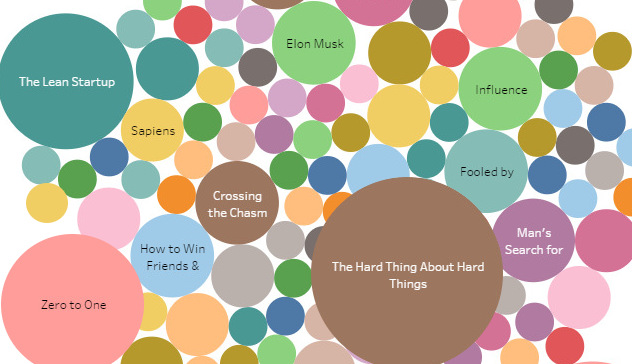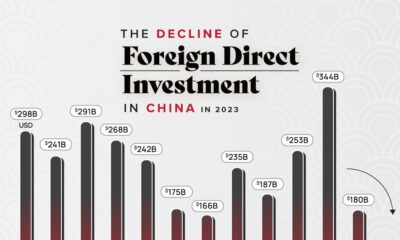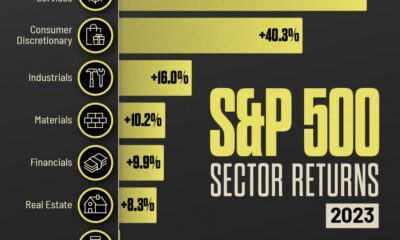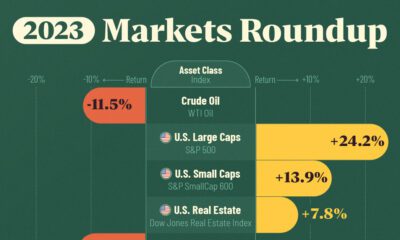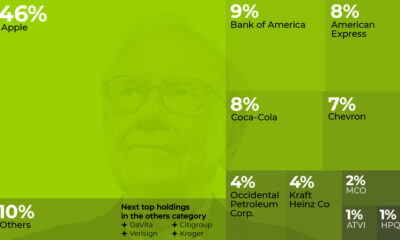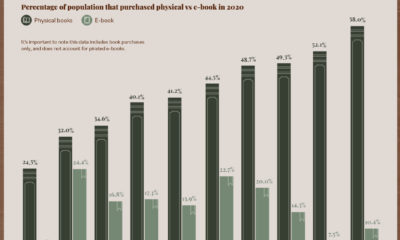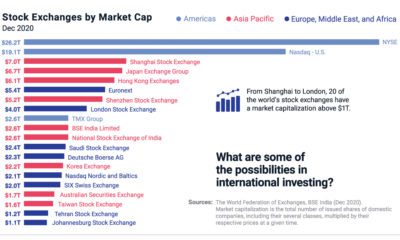Misc
The Most Prolific Investors in Startups Are Fans of These Books
The world’s most elite startup investors come in all shapes and sizes.
Some of them, such as Marc Andreessen or Josh Kopelman, come from an operating background as former entrepreneurs themselves. They know what it takes to build a great company, and they use that knowledge to try and spot the next Mark Zuckerberg or Evan Spiegel to place a bet on.
Other venture capitalists come at it from a more institutional angle. Mary Meeker, for example, spent a lot of time on Wall Street before making the move to Silicon Valley. She covered technology research for investment banks such as Salomon Brothers and Morgan Stanley, and helped lead famous IPOs for companies like Netscape and Google.
However, despite the differences in the backgrounds and approaches of top VCs, there does seem to be at least one commonality: they tend to be exceptionally well-read. Every new book helps arm them with knowledge, some of which could help give them the edge on their next deal or investment.
The favorite books of top startup investors
Joe Hovde, from the Ramen Profitable blog, collected data from the interviews of every venture capitalist and entrepreneur featured on the popular Twenty Minute VC podcast.
Each guest on the podcast is asked to provide a book recommendation, and Hovde has visualized this information.
The most cited authors include Ben Horowitz, Eric Ries, Nassim Taleb, and Peter Thiel
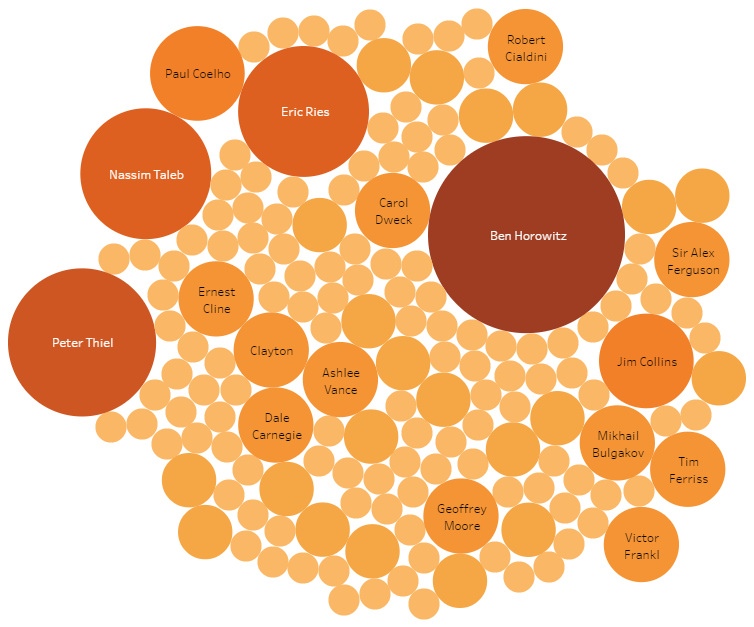
Ben Horowitz and Peter Thiel are fellow venture capitalists, while Eric Ries developed the “lean startup” methodology based on his experiences advising startups. Nassim Taleb is a mathematician, philosopher, and former trader that is best-known for popularizing the ideas of “black swans” and “antifragility”.
The most cited book overall is easily The Hard Things About Hard Things by Ben Horowitz

Ben Horowitz’s book The Hard Things About Hard Things covers Ben’s early trials and tribulations as a co-founder of Loudcloud, which almost imploded multiple times during the Dotcom Bust. Eventually the company pivoted to enterprise software and was sold to HP for $1.7 billion in 2007, proving to ultimately be a success. The book cuts right to the hard facts about entrepreneurship and building companies, relating back to the challenges faced in Ben’s previous endeavors.
The most popular non-fiction books also include Zero to One and The Lean Startup
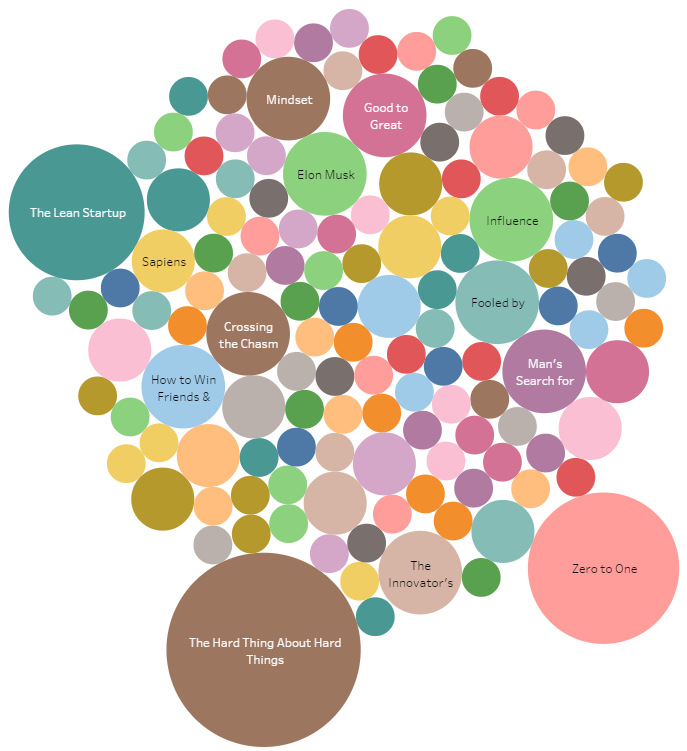
Other titles that got some love from VCs: Nassim Taleb’s Fooled by Randomness and Good to Great by Jim Collins.
The two most popular fiction titles are The Alchemist and The Master and Margarita
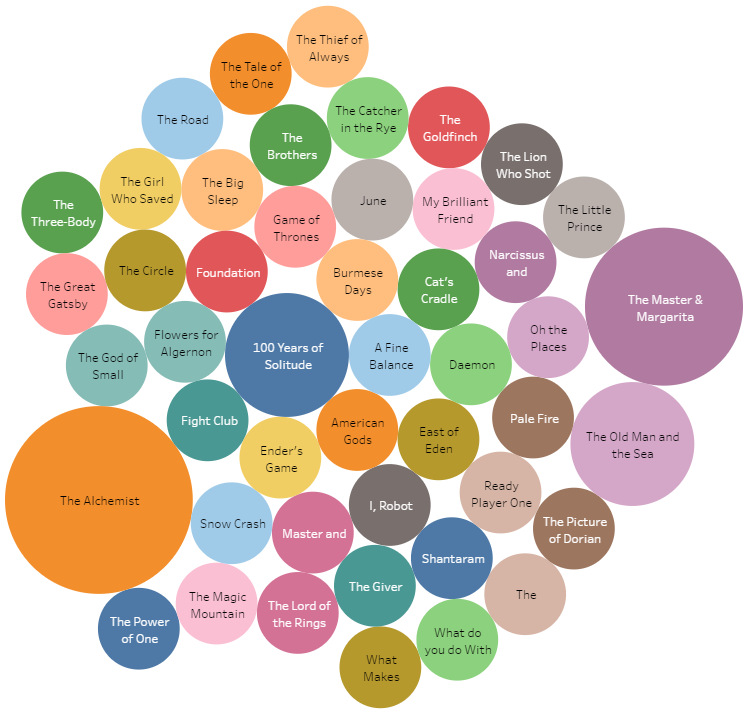
Paulo Coelho’s The Alchemist is considered a modern classic by many. It tells the story of Santiago, an Andalusian shepherd boy who one night dreams of a distant treasure in the Egyptian pyramids. He leaves Spain to pursue his dream, and discovers himself along the way.
The Master and Margarita, a novel by Russian writer Mikhail Bulgakov, is another modern masterpiece. Written during the darkest days of Stalin’s reign, it is a satirical take on the Soviet Union that uses a visit by the Devil as a literary vehicle to tell the tale.
What are the books that have influenced you the most?
VC+
VC+: Get Our Key Takeaways From the IMF’s World Economic Outlook
A sneak preview of the exclusive VC+ Special Dispatch—your shortcut to understanding IMF’s World Economic Outlook report.

Have you read IMF’s latest World Economic Outlook yet? At a daunting 202 pages, we don’t blame you if it’s still on your to-do list.
But don’t worry, you don’t need to read the whole April release, because we’ve already done the hard work for you.
To save you time and effort, the Visual Capitalist team has compiled a visual analysis of everything you need to know from the report—and our VC+ Special Dispatch is available exclusively to VC+ members. All you need to do is log into the VC+ Archive.
If you’re not already subscribed to VC+, make sure you sign up now to access the full analysis of the IMF report, and more (we release similar deep dives every week).
For now, here’s what VC+ members get to see.
Your Shortcut to Understanding IMF’s World Economic Outlook
With long and short-term growth prospects declining for many countries around the world, this Special Dispatch offers a visual analysis of the key figures and takeaways from the IMF’s report including:
- The global decline in economic growth forecasts
- Real GDP growth and inflation forecasts for major nations in 2024
- When interest rate cuts will happen and interest rate forecasts
- How debt-to-GDP ratios have changed since 2000
- And much more!
Get the Full Breakdown in the Next VC+ Special Dispatch
VC+ members can access the full Special Dispatch by logging into the VC+ Archive, where you can also check out previous releases.
Make sure you join VC+ now to see exclusive charts and the full analysis of key takeaways from IMF’s World Economic Outlook.
Don’t miss out. Become a VC+ member today.
What You Get When You Become a VC+ Member
VC+ is Visual Capitalist’s premium subscription. As a member, you’ll get the following:
- Special Dispatches: Deep dive visual briefings on crucial reports and global trends
- Markets This Month: A snappy summary of the state of the markets and what to look out for
- The Trendline: Weekly curation of the best visualizations from across the globe
- Global Forecast Series: Our flagship annual report that covers everything you need to know related to the economy, markets, geopolitics, and the latest tech trends
- VC+ Archive: Hundreds of previously released VC+ briefings and reports that you’ve been missing out on, all in one dedicated hub
You can get all of the above, and more, by joining VC+ today.
-

 Education1 week ago
Education1 week agoHow Hard Is It to Get Into an Ivy League School?
-

 Technology2 weeks ago
Technology2 weeks agoRanked: Semiconductor Companies by Industry Revenue Share
-

 Markets2 weeks ago
Markets2 weeks agoRanked: The World’s Top Flight Routes, by Revenue
-

 Demographics2 weeks ago
Demographics2 weeks agoPopulation Projections: The World’s 6 Largest Countries in 2075
-

 Markets2 weeks ago
Markets2 weeks agoThe Top 10 States by Real GDP Growth in 2023
-

 Demographics2 weeks ago
Demographics2 weeks agoThe Smallest Gender Wage Gaps in OECD Countries
-

 Economy2 weeks ago
Economy2 weeks agoWhere U.S. Inflation Hit the Hardest in March 2024
-

 Green2 weeks ago
Green2 weeks agoTop Countries By Forest Growth Since 2001

